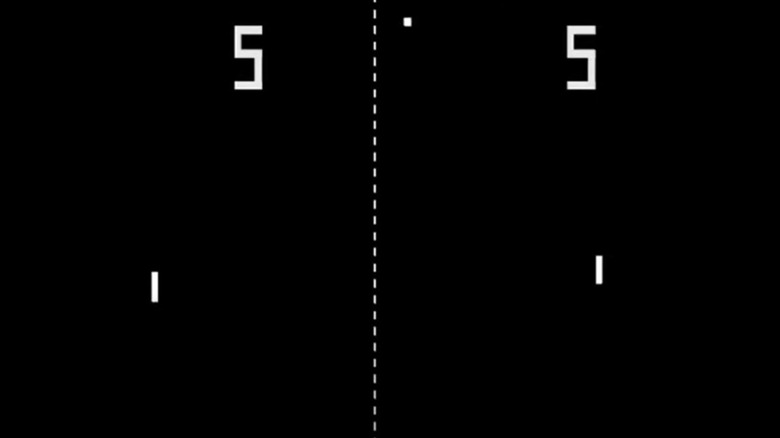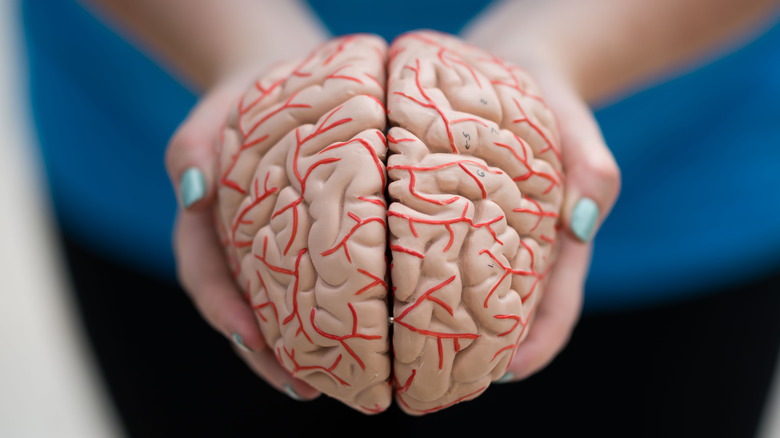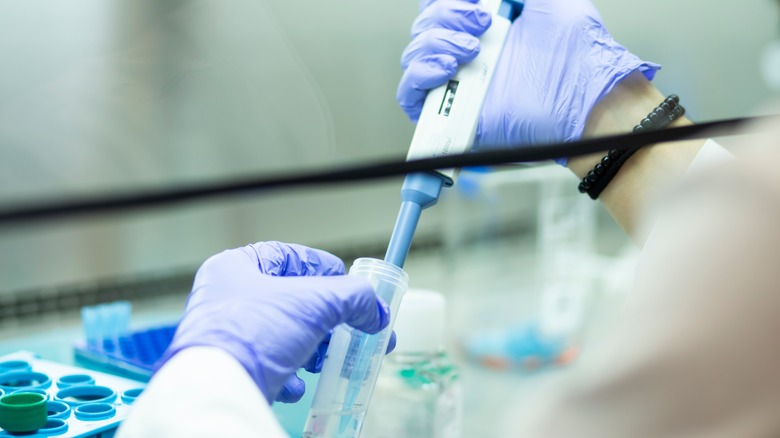The Bizarre Way Scientists Taught Human Brain Cells In A Dish To Play A Video Game
The mad science future of brains in a lab is here.
There aren't any whole human brains being forced to do experiments in dark, underground labs — at least not that we know of. But since 2013, scientists have been creating something called mini-brains: little collections of thousands of neurons that they can experiment on in labs in order to learn more about human cognition (via BBC).
Don't worry: these brains aren't conscious. But the neurons contained within the mini-brains can respond in very surprising and sophisticated ways to stimuli. For instance, the brains can play video games. In 2022, researchers working on a mini-brain were able to successfully teach it to play the arcade game Pong. By creating a brain made of some 800,000 neurons and plugging it into an electrode matrix called the "DishBrain," scientists were able to administer feedback to the brain, according to The Guardian. They found that, although the mini-brain wasn't exactly skilled at Pong, it was able to develop some real video gaming abilities — and it was able to do so very quickly.
How the brain works
The brain is made up of neurons, which are cells that work as communication messengers within the nervous system, according to the National Institute of Neurological Death and Stroke. There are lots of neurons in our brain, though they can also be found throughout the body, according to Khan Academy. There are three different types of neurons: sensory neurons, motor neurons, and interneurons.
New neurons can be generated over the course of your life to help you learn new things, according to the National Institute of Neurological Death and Stroke. That means your brain can keep growing and learning. The brain can also process things very quickly and intuitively at massive speeds without being formally taught them, according to Science Alert, meaning the human brain is infinitely more capable than even our most robust artificial intelligence, per the BBC.
Lab-grown mini-brains have tons of potential uses. If we can figure out how to grow neurons in a lab from stem cells, we could theoretically use them to replace damaged brain cells. We could also use them to do research on a variety of brain conditions, and to find cures for neurological disorders before deterioration sets in.
The mini brain that plays Pong
To create their mini-brain, scientists used stem cells from humans as well as brain cells from mice, per the BBC. They were able to cultivate around 800,000 neurons to create a mini-brain around 1/100,000 the size of a human brain, which normally has around 80 billion neurons, per Science Alert.
After plugging it into electrodes, the brain was able to produce and respond to electrical activity. It took only five minutes before the brain began to learn how to play the Pong game, and as it practiced, it got even better, according to The Guardian. It played nearly 500 total games.
The final results showed that the brain wasn't exactly great at Pong. Still, it was better than pure chance would be. One of the scientists who worked on the project, Professor Karl Friston from the University College London, said of the findings, "This is remarkable because you cannot teach this kind of self-organization; simply because, unlike a pet, these mini-brains have no sense of reward and punishment."
In the future, the scientists behind the study want to carry out similar research that explores how alcohol and other medications affect the mini-brain's processing capabilities. It's worth noting that scientists emphasize they're not trying to make a conscious brain. In fact, they're deliberately trying to avoid that, as it would be unethical.


